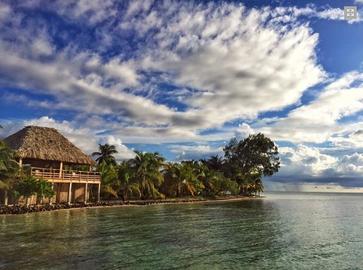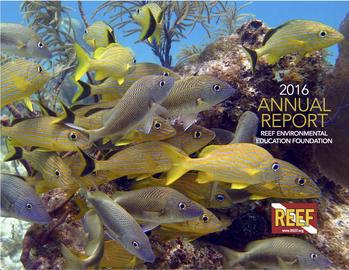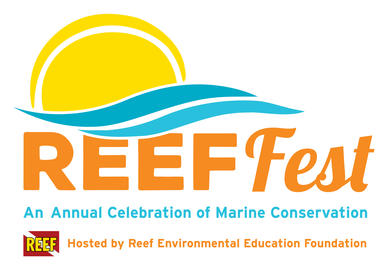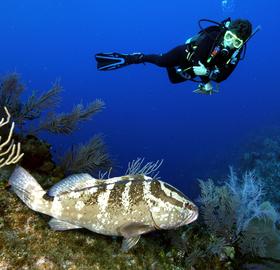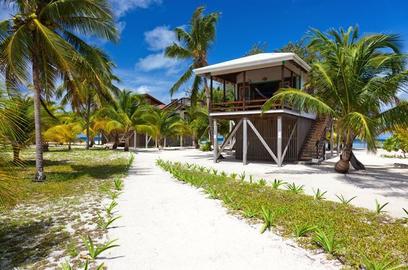As climate change and tropical storms have increasingly drastic impacts on our blue planet, the marine conservation work we do at REEF is more important now than ever. The future of our ocean depends on each of us.
Over the last quarter-century, REEF's programs and impact have grown in scale and scope, affecting ocean conservation and education world-wide. Despite our global reach, our headquarters remains in Key Largo where it all began in 1993. The REEF Headquarters building is housed in the oldest building in Key Largo and serves as a community touchstone for local residents and visitors alike.
We are proud to release REEF's 2016 Annual Report, reviewing accomplishments from our ocean conservation and education programs. Click here to view the Annual Report. In the report, we highlight many achievements and successes in 2016, such as:
Have you checked out REEF's online store recently? It's the perfect place to get gifts for the ocean lovers in your life. In addition to a great selection of marine life books and REEF survey supplies and gear, we have a ton a fun gift items -- Holiday Ornaments, Preservation Creature Puzzles, Hammerhead Bottle Openers, Swell Style Bags from Bungalow360, and Conservation Creature Plushes! Visit www.REEF.org/store to see all of our great inventory.
REEF Headquarters in Key Largo and much of the surrounding community are beginning to return to normal following temporary closure due to Hurricane Irma in September. Because of the storm it was necessary for REEF Fest to be postponed from its original September dates. We are excited to announce that we have rescheduled the event for December 7-10, 2017! We appreciate your patience while we coordinated with event partners and sponsors to reschedule the event.
We are proud to share the latest publication to result from REEF's programs - the paper, titled "Hydroacoustics for the discovery and quantification of Nassau Grouper (Epinephelus striatus) spawning aggregations" was published in the scientific journal Coral Reefs earlier this year. The Grouper Moon Project is always looking for new and/or better ways of accurately estimating the number of spawning Nassau Grouper at the aggregation sites being monitored.
South Water Caye Marine Reserve, in southern Belize, is a unique mangrove/coral reef habitat and home to several endemic species including the Social Wrasse and the Maya Hamlet. The goal of this trip is to study the effects of stressors such as invasive lionfish and habitat loss on this remote area of the Mesoamerican barrier reef system, with a special focus on how these impacts are affecting species that are not found anywhere else in the Caribbean. Participants will work with local partners to conduct fish surveys as well as lionfish research and removals.
An annual celebration of marine conservation. Events include educational seminars, social gatherings, diving and eco-adventures alongside some of the most prestigious names in diving and marine conservation. All REEF Fest events are open to the public. Visit www.REEF.org/reeffest to register and for schedule details.
REEF fish survey data collected from Bonaire in 2015 were used to help evaluate the impact of terrestrial degradation on nearby coral reefs, specifically investigating the link between vegetation ground cover and tree biomass index to coral cover, fish communities and visibility. The authors found a positive relationship between ground cover and coral cover below 10 m depth, and a negative relationship between tree biomass index and coral cover below 10 m.
The Grouper Moon Project is always looking for new and/or better ways of accurately estimating the number of spawning Nassau Grouper at the aggregation sites being monitored. In 2014, we tested the use of a split-beam echosounder as a tool for surveying the abundance and size of fish at the aggregation site; the results of the study are detailed in this peer-reviewed paper. We found that the echosounder performs fairly well at providing an index of abundance, although the absolute accuracy of the method was not sufficient to replace other survey methods (e.g.

